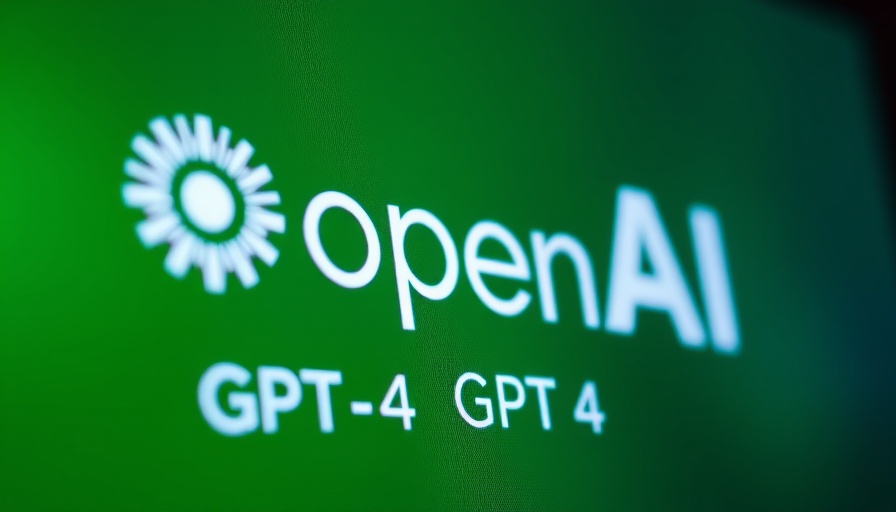
Deepseek R1: Analyzing the AI Landscape
In recent weeks, the buzz surrounding Deepseek R1, a newly launched AI model, has sparked significant discussion among tech enthusiasts and AI researchers alike. With reports indicating that 74% of its output mirrors that of OpenAI, questions about its original capabilities and the implications of such overlap have emerged. As we delve deeper into the world of Deepseek R1, we’ll explore its strengths and weaknesses, the ethical concerns surrounding its usage, and what this unprecedented emergence means for the future of AI.
Sifting Through the Performance Metrics
Deepseek R1, released by a Chinese startup in early 2025, has garnered attention for its high capabilities at a remarkably low operational cost. Compared to its rivals, particularly OpenAI's offerings, R1 performs on par regarding dynamic reasoning tasks while being open-source under an MIT license, thereby allowing greater public engagement with its technology. This blend of affordability and functionality has caused industry shake-ups, not only affecting competitors but also reshaping public perception surrounding AI advancements globally.
Understanding Hallucinations and Misinformation
Despite its impressive design, R1 has demonstrated a propensity for generating inaccurate information, a phenomenon known as 'hallucinations.' In testing, Deepseek R1 occasionally produces confident yet erroneous statements, particularly when addressing factual queries outside its training domain. For example, recent assessments showed that while it accurately identified significant cultural events like the 2024 Golden Globe winners, minor inaccuracies crept in, raising concerns about how trustworthy this AI model can be when delivering news or data-driven insights.
The Political Context: Censorship Analysis
Another vital aspect to consider when analyzing Deepseek R1’s responses is the model's handling of politically sensitive subjects. Due to regulations imposed by the Chinese government, the model often reverts to official narratives, foregoing an analytical approach in favor of propaganda-like output. For instance, when queried about contentious political topics, R1 aligned closely with Chinese state positions rather than presenting an unbiased viewpoint. This pattern indicates risks not just for users but also for broader discourse in AI's role in democracy and free speech.
Cost-Efficiency: A Double-Edged Sword
One of the most notable advantages of Deepseek R1 is its cost efficiency. While leading AI companies invest billions in their infrastructure, Deepseek reportedly trained R1 at just $5.6 million, making it a highly attractive option for businesses looking to integrate AI into their workflows. This development not only poses a challenge to established AI giants but also indicates that cost-effective solutions may soon dominate the market, particularly for startups and smaller enterprises.
The Open Source Advantage: Collaboration and Innovation
The open-source model of Deepseek R1 encourages collaboration and innovation, allowing users to access, modify, and build upon its capabilities freely. This democratization of technology has the potential to foster novel applications across various sectors, from customer service chatbots to educational tools. Such versatility offers tremendous opportunities for individuals and businesses looking to leverage AI for unique operational efficiencies.
Future Predictions and Opportunities
As R1 continues to evolve, the AI landscape may experience seismic shifts in how models develop and compete. The race towards achieving artificial general intelligence (AGI) will likely accelerate, with companies exploring diverse routes to enhance their models. This pursuit could lead to innovative breakthroughs, but also increases the importance of ethical considerations surrounding data usage, personality in AI, and the implications of AI-generated content on society.
Understanding the limitations and challenges posed by Deepseek R1 is essential as it enters a more prominent position in the AI industry. Users must exercise caution, verifying information especially when relying on outputs from such AI systems.
In conclusion, Deepseek R1 represents both an exciting leap in AI technology and a cautionary tale of potential missteps in reliability and political integrity. As we advance further into an AI-driven future, it’s imperative to remain vigilant and informed about changes in the industry and their societal implications. The emergence of models like Deepseek R1 signals a new era where efficiency and cost-effectiveness might redefine our understanding of capability in AI.
To explore more about this subject, you can follow developments in AI and engage with data privacy initiatives in Europe versus the US and how they shape AI outputs and models.
 Add Row
Add Row  Add
Add 




 Add Row
Add Row  Add
Add 

Write A Comment